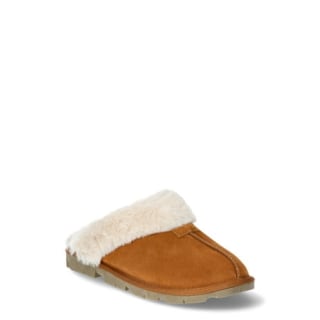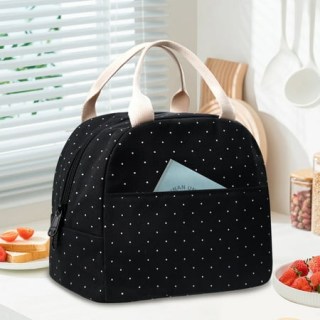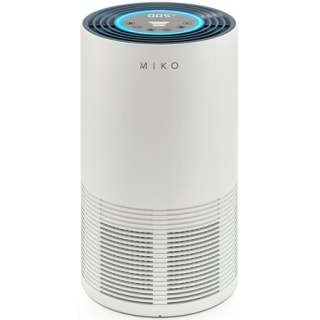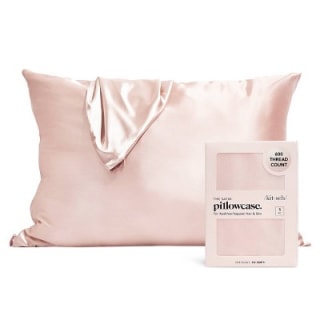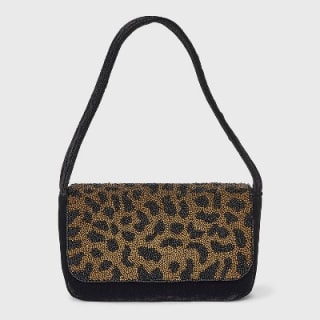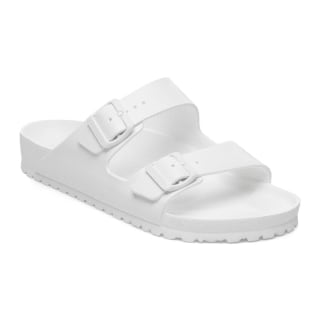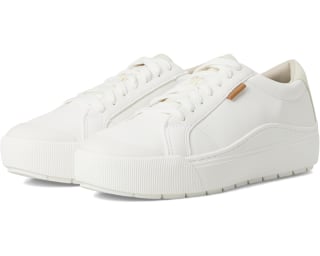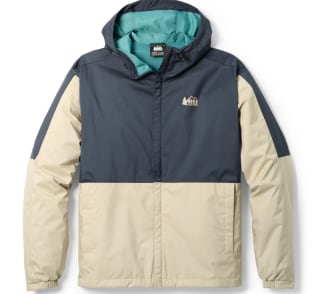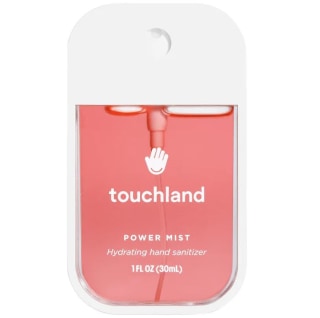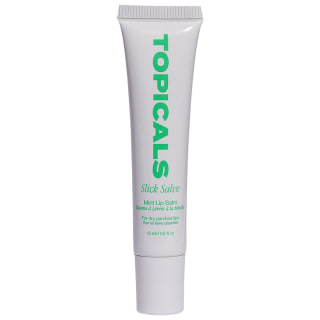Returning a package involves a series of tedious tasks: repacking, relabeling and visiting your local carrier to ship it back to its rightful warehouse, to start.
In a zeitgeist where online shopping is predominant, you’re more likely to avoid buying a product if the return costs you more money or effort than you're willing to spend.
As for brands, the return process can be easy or complicated, depending on the size of the delivery package. According to the National Retail Federation, 19.3% of online sales will be returned in 2025, amounting to $849.9 billion. Not only are brands affected by returns, but also consumers lose money and time in the process.
Since retailers have shifted away from a free return model, how are consumers finding efficacy and decreasing inconvenience when it comes to returns? Co-founder of Pollen Returns, Christian Piller, believes that some retailers are channeling a new return approach and studying consumers' behaviors while analyzing how they can give customers what they want at a more reasonable cost.
“However, both things come with a cost attached and retailers are effectively subsidizing expensive customer behaviors. With retail margins and profits under pressure, more retailers are looking at how they can reduce the cost of online fulfillment and returns. This has to be done sensitively, however, as consumers have become used to getting these things for free,” says managing director and retail analyst at GlobalData Retail, Neil Saunders.
Shipping remains cost-efficient (at a cost)
While some retailers are balancing their profits with a change in their return policy, most brands continue to offer free shipping.
“From a macro-perspective, shipping has gotten more expensive. Whether that is increased cost in fuel, increase cost of labor [or] the complexity in logistics, the last two years, since the pandemic, it accelerated the cost of moving something from point A to point B,” says returns expert and CEO of B-Stock Solutions, Marcus Shen. “I’m sure that’s a huge driver of people rethinking all the things that we’ve been taking for granted from an e-commerce perspective."
“For some categories with rich margins, such as apparel and beauty, this isn’t too much of an issue. However, for others with thin margins like grocery, this can mean free shipping pushes online selling into a loss,” adds Saunders.
Shorter periods for returns
"Retailers don't want to take aged inventory and take back, for example, a coat in March. That’s one of the reasons why retailers are trying to disincentivize consumers from doing returns," says BDO USA national managing partner Natalie Kotlyar.
Currently, many retailers have adjusted their return policy by shortening the period of returns from 60 days to 30 days, but some have drastically cut their return periods to 14 days whether you return by mail or in-store.
According to 2025 data from Happy Returns, retailers themselves (19% of them, in fact) say it takes "too long to process and restock returns," which in turn leads to a shorter return policy.
In reality, shoppers are more likely to abandon their shopping cart if the retailer presents a challenging return. According to data from Happy Returns, 81% of shoppers will take a retailers' return policy into consideration before shopping or adding items to cart, with 71% of shoppers stating that a poor return experience will stop them from shopping certain brands again.
With so much inventory left, online stores are trying to shorten the return period so customers have less time to make a return decision. "Retailers want to liquidate inventory and turn it into cash because they have their own inflation and interest rates they are dealing with," adds Kotlyar.
Retailers charge a fee for returns
Retailers aren't charging return fees just because. Forty percent of retailers say its due to the increase in the cost of processing returns, while another 40% note the increase in carrier shipping costs.
For example, Amazon charges a $1 fee for returning a package at a UPS location instead of dropping it off at a Whole Foods or Amazon Fresh store. This initiative is not only to freeze pre-pandemic consumer habits, but to balance the loss from returned goods.
"Just returning the product itself probably costs the retailer $12, and that doesn’t include the cost of processing, restocking and the loss of selling something at a discount price through liquidation. So offering for free when the return cost a minimum of $12 [is] a challenging value proposition for these retailers to continue to stomach the full cost," adds Piller.
In-store flexible returns
“Now returns can be free if returned into the store and brands that have those locations can convert those losses into another purchase,” says Kotlyar.
The buy online, pick-up in store model is an advantage brick-and-mortar retailers like Walmart and Target are renowned for, but e-commerce brands are also providing in-person methods for returns. For example, Amazon customers can easily return their packages at any Kohl’s location and they will pack, label and ship your return for free.
Another retailer that continues offering competitive free shipping and returns is Zappos. Merchandise can be returned within 60 days from the time of purchase. Also, you can avoid repacking and shipping it off by returning your Zappos merchandise at Whole Foods for free.
Retailers offering store credit for returned goods
One way retailers are improving the post-purchase experience is to offer customers a store credit if they decide to return. "From a retail perspective, they already have the cash; usually that credit goes unused and is free money for the retailer [anyways]," shares Kotlyar.
Other brands offer consumers a free-shipping label and a drop-off location through a third-party conglomerate to facilitate the return process.
Walmart return policy and products to shop
Any item sold and shipped by Walmart can be returned or replaced by mail within 90 days of receipt. Walmart also has an extended holiday policy that allows any items purchased from Oct. 1 to Dec. 31 be returned through Jan. 31.
This pair of slippers is crafted with a foam cushioning to bring you comfort with each step, as well as a faux fur lining for extra coziness. Snag them while they're less than $10!
Elevate your office lunch with this stylish, insulated lunch box. With 16 different colors to choose from, you can rest assured cold foods will remain so thanks to the insulated interior.
Prevent and avoid illnesses (especially this time of year) with the help of this air purifier, which monitors air quality and adjusts its settings based on the pollutants it needs to get rid of, such as dust, allergens and more.
Target return policy and products to shop
Target has a pretty flexible return policy, with the ability to return Target brand items — with a receipt — up to 365 days after purchase. Other items sold by the retailer have a 90-day return window, while specific items sold by Target+ have a strict 30-day return policy.
In a similar fashion to Walmart, Target is employing an extended holiday return window, allowing consumers to return items purchased between Nov. 1 and Dec. 24 through Jan. 24 for Target+ items (excluding seasonal holiday decor).
Head into the new year feeling organized, thanks to this affordable planner.
Satin pillowcases can help to reduce frizz and improve hair and skin quality, compared to cotton or other fabrics. We're big fans of Kitsch at Shop TODAY, whose pillowcases are well-loved due to their variety of patterns and longevity, no matter how many times you wash and sleep on them.
You still have time to snag New Year's Eve accessories that will complete your look — like this beaded shoulder bag.
Zappos return policy and products to shop
Consumers can return items within 60 days of purchasing them from Zappos, so long as they are in new condition.
"I've had my pair of Eva Birkenstocks for three years and they still look good as new!" says social video producer, Anita Chomenko. "I decided to buy these before a trip to Hawaii when I wanted a flip flop/sandal that had a bit more support but would also withstand the beach and the water. These are my go-to shoes for every beach and diving vacation I take. What I love about these is that they're comfortable to walk in, and you don't have to worry about them getting dirty. Put them under water and all the sand will come right off! They come in a ton of cute colors, and they're perfect for the boardwalk."
NEW- "These were all over TikTok last year and for good reason," says associate edito Kamari Stewart. "I have amassed quite an army of white sneakers, and these have made their way to the top recently. They have a bit more of an elevated look, so I opt for these when I want something a little dressier than my Allbirds athletic-style sneakers. Plus, I love that they have a little platform to them. They're comfortable enough to wear all day. I don't remember needing to break these in either, which is a win."
REI return policy and products to shop
If you're an REI Co-op member, you have flexibility and leniency when it comes to returning items to the outdoor retailer. Members have up to 365 days to return most items, while you have 90 days to return outdoor electronics. Non-members have a 90-day window to return items as well as outdoor electronics.
Stay warm with this beanie, that's designed out of a partial wool material.
Score a durable rain jacket for less than $50 in this version from REI Co-op. It comes complete with two different wind and waterproof layers that will keep you (and your clothes) dry underneath.
Sephora return policy and products to shop
Sephora's standard return policy allows you to return new or gently used products for a full refund (to the original payment method) if returned within 30 days of purchase — but don't forget the receipt.
The brand also has an extended holiday return policy, allowing consumers to return items purchased between Oct. 31 through Dec. 31 all the way to Jan. 31, for in-store credit or exchanges.
"My sister gifted me one of these for Christmas, and it was my first time owning one because I refused to pay $10 for a singular hand sanitizer," says Stewart. "It is, however, pretty solid! I like the scent, and the square shape is aesthetically pleasing. I'm not sure I'd ever repurchase at full price because $10 is still crazy to me, but I can't say I wasn't excited when I got it."
Key ingredients hyaluronic acid and ceramides work together to "save" dry lips and leave them more hydrated and smooth before — with just one swipe.
Other retailers with generous return policies
- American Eagle - AE accepts free returns for a full refund within 30 days of purchase plus in-store and curbside pickup. For items purchased on or after Oct. 23, the brand is offering an extended holiday return policy — allowing consumers to make returns through Feb. 1, 2026.
- Kohl's - You can return your product up to 90 days of purchase, with or without a receipt. Plus, the brand is offering an extended holiday return window, allowing shoppers to return items purchased between Oct. 1 and Oct. 31st through Jan. 31, 2026. Sephora items specifically bought at Kohl's from Oct. 5 through Dec. 30 can be returned through Jan. 31, 2026, as well.
- Nordstrom - This retailer accepts free returns in store or by mail with a prepaid return label. You can start any return here.
How we chose
Shop TODAY spoke with multiple consumer and retail experts to help ensure our audience receives credible advice on returning products. We relied on past reporting and personal experience with the brands to select products that coincided with their answers, providing our readers with a well-rounded, reputable shopping list to choose from.
Meet the experts
At Shop TODAY, our reporters interview a range of qualified consumer and retail experts to capture a wide scope of perspectives on retailers' return policies. We also make sure that all expert guidance and recommendations are made independently and with no undisclosed financial conflicts of interest.
- Marcus Shen is an e-commerce returns expert and CEO of B-Stock Solutions, the world's largest B2B marketplace for excess merchandise.
- Neil Saunders is the managing director and retail analyst at GlobalData Retail, a retail research and consulting firm, focused on retailing and consumer behavior.
- Christian Piller is the co-founder of Pollen Returns. His mission is to connect retailers with trusted logistics partners to provide shoppers with a front-door pickup experience at no additional cost to the retailer.
- Natalie Kotlyar is the national managing partner at BDO USA, the fifth-largest accounting and consulting firm worldwide.
- Shipping remains cost-efficient (at a cost)
- Shorter periods for returns
- Retailers charge a fee for returns
- In-store flexible returns
- Retailers offering store credit for returned goods
- Walmart return policy and products to shop
- Target return policy and products to shop
- Zappos return policy and products to shop
- REI return policy and products to shop
- Sephora return policy and products to shop
- Other retailers with generous return policies
- How we chose
- Meet the experts


